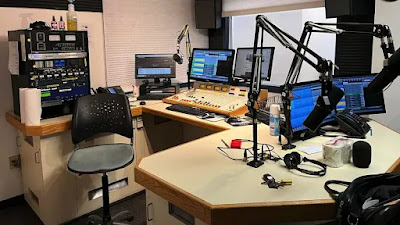 |
| Last one leaving: turn off the lights |
Layoffs at two of the top labels, Universal Music Group and Warner Music Group, began in February, affecting dozens of employees, many in traditional media positions such as publicity, marketing and radio.
Billboard reports the layoffs have had little to do with the companies’ financial health: Universal earned $12 billion in revenue and $1.3 billion in net profit last year, and Warner said it is coming off its best quarter ever. But top executives from both labels announced they were adapting to a long-running industry shift towar
In a late February statement announcing layoffs of roughly two dozen staffers, Julie Greenwald, chairman/CEO of Warner-owned Atlantic Music Group, said, “The changes we’re making today are primarily happening in our radio and video teams.” And Lucian Grainge, Universal’s chairman/CEO, told staffers in January, before the latest layoffs, that the label would be “not just expanding geographically and leveraging new technologies” but “further evolve our organizational structure to create efficiencies in other areas of the business.”
From a practical standpoint, according to Diane Monk Harrison, a radio manager at Warner-owned distribution company WEA, who lost her job in mid-March, that meant the industry layoffs have been “disproportionately affecting radio promotion.”The broadcast business is shrinking: The biggest radio company, iHeartMedia, has been downsizing since the pandemic, including a recent wave in the last few weeks. That means fewer programmers exist for major labels to lobby for extra playlist adds. “Radio is still extremely important,” says Skip Bishop, a former longtime promotion executive at Sony and other labels who has been a consultant for more than a decade.
“But it’s just an evolution. You don’t need six regionals, three nationals, two vps and an svp [at a label] when 20 to 45 people are making the decisions that 200 people used to make at radio.”
As listeners have shifted away from old-school radio stations in favor of on-demand streaming, the radio business has declined: According to Nielsen Media Research data, weekly listenership dropped during the pandemic, from 89% of adult Americans in 2019 to 82% in 2022. The medium’s most resilient advertising area is in digital sales, a recent Radio Advertising Bureau and Borrell Associates study shows, and not in AM-FM airplay.
“The only portion of radio that’s growing is not dependent on music,” says Gordon Borrell, CEO of Borrell Associates, an analyst group that focuses on media advertising and marketing. “I don’t think the record labels are daft of what has happened to the industry in terms of listeners, and they’re well aware of the aging nature of terrestrial radio programming.”
While rock, pop and hip-hop artists have become less reliant on radio in recent years, some genres, including Latin and country, remain attached to radio. “Music companies continue to be very important strategic partners with the entire radio industry and there are no signs that is abating,” says Wendy Goldberg, iHeartMedia’s spokesperson, in a statement. “Labels rely on broadcast radio to break new artists, because in order to introduce new music to the masses, you need radio and its unparalleled reach.”

No comments:
Post a Comment